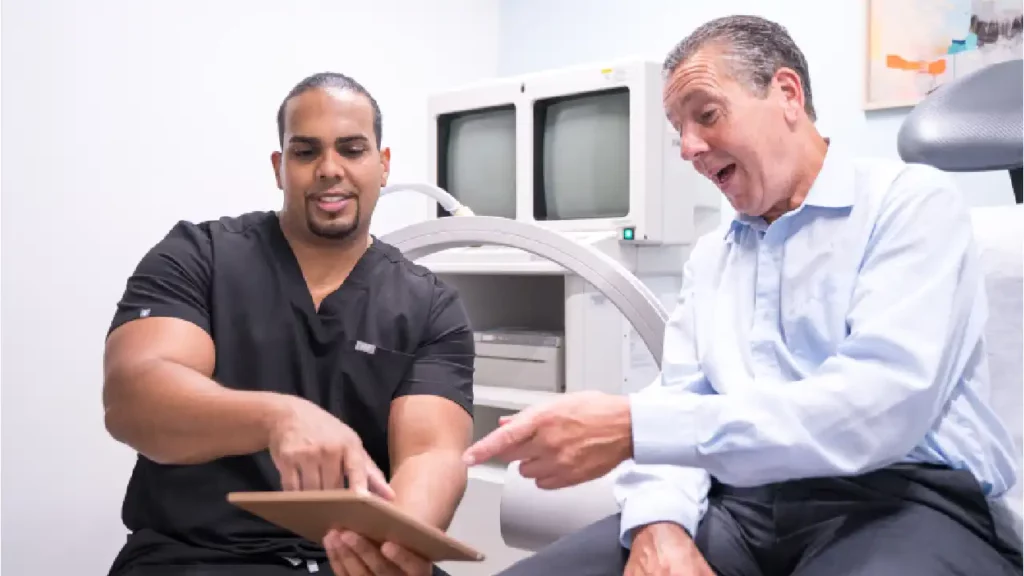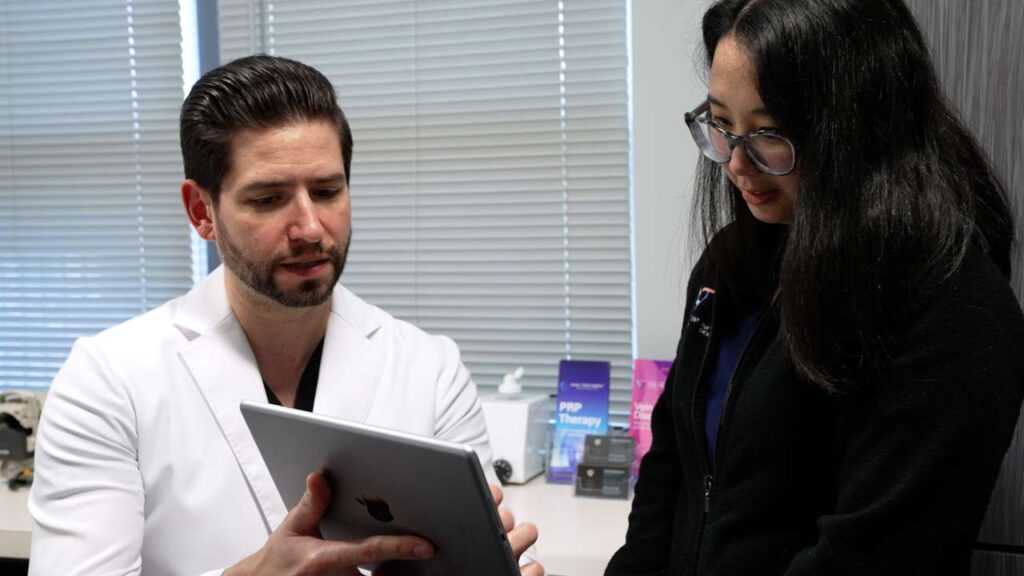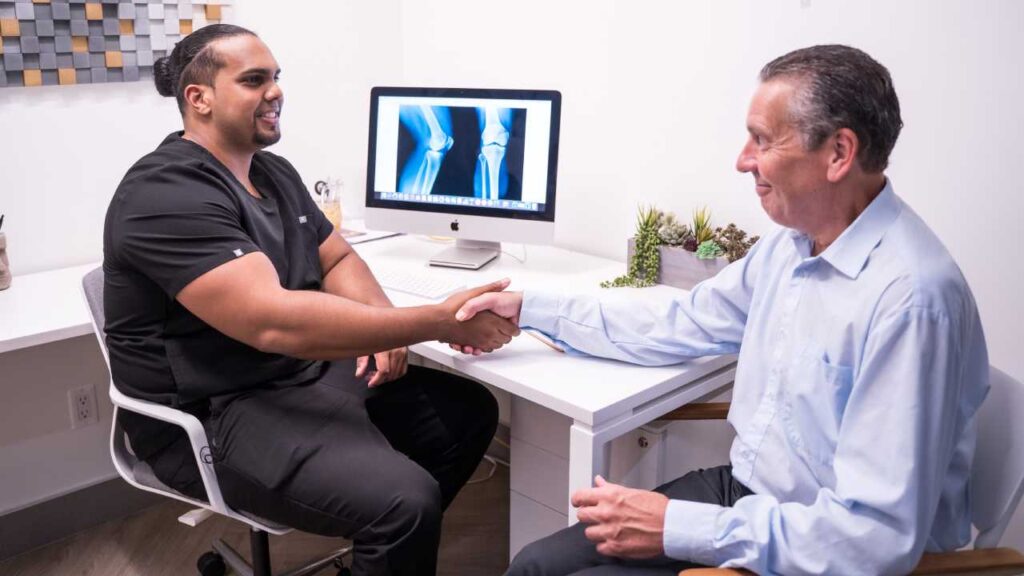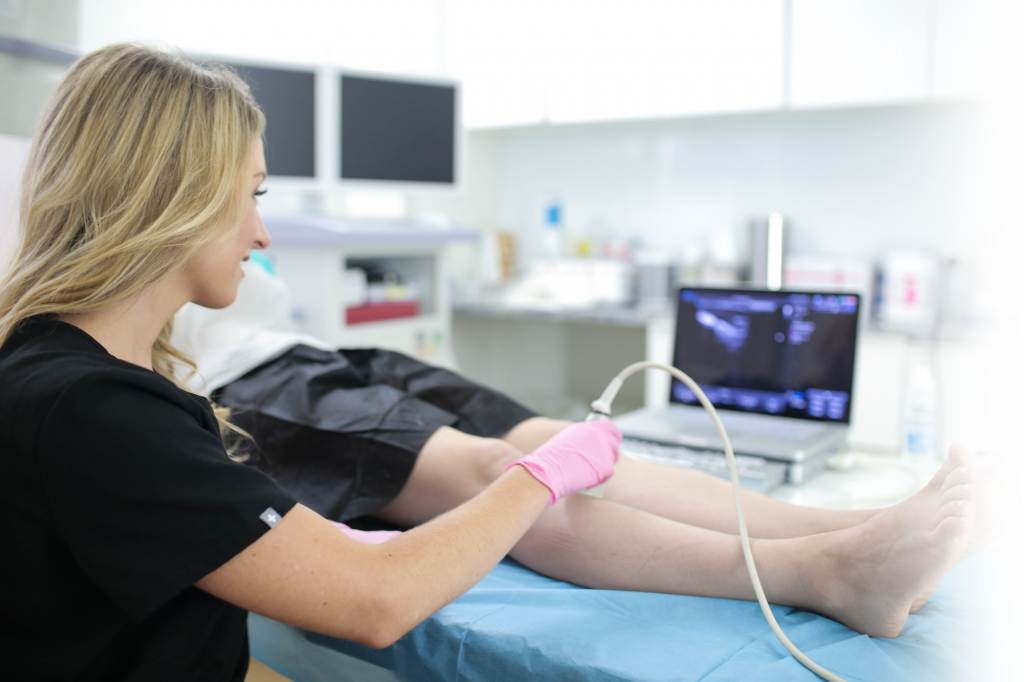How Have Sclerotherapy Treatments Improved in Recent Years?
Sclerotherapy treatments are widely regarded as extremely safe procedures. Unlike other treatments, sclerotherapy doesn’t require any anesthesia, and it doesn’t employ thermal energy. It also leaves no implants in the blood vessels. Sclerosants are excreted within 72 hours. Over the past few decades, new treatments have been introduced that rival sclerotherapy’s efficacy and safety.
However, sclerotherapy remains a first line of treatment for spider veins and small varicose veins. It has improved over the years, further improving its risk profile. Book an appointment with Harvard-trained sclerotherapy experts in New Jersey. Here are some new ways they use sclerotherapy in 2023.
- New Sclerotherapy Solutions: Vein doctors used to inject a saline sclerotherapy solution that was mildly irritating to the patient. Now, most doctors use detergent-like sclerosants, or new saline solutions that irritate the treated vein, but not the surrounding tissue.
- New Sclerosing Formulas: Initially, sclerosing solutions were primarily liquid. While these are still effective for small veins, larger veins require more medication to resolve. Now, doctors can use foam formulas that fill a larger vein without increasing the dosage by much. These foam sclerosants expand to coat the vein walls more fully, making them more effective for larger veins.
- Pre-Mixed Foam: Some foam sclerosants are created by the vein doctor mixing a liquid sclerosant with air and passing it rapidly between syringes. However, there is room for error in this process, and the air in the room may not be sterile. Now, doctors can use pre-mixed foam sclerosants that come in sealed canisters. This reduces dosing errors and issues with air bubbles or air contamination.
- Ultrasound Guidance: In the past, sclerotherapy was administered by sight alone. A doctor could inject visible veins through the surface of the skin. Now, vein doctors can use ultrasound guidance to find the source of the vein, position the treatment, and monitor the treatment through the vein. This makes treatment more precise and effective, and also prevents a recurrence.
Vein mapping locates blood clots and connecting blood vessels to make sure the sclerosing solution doesn’t disrupt a clot or enter the wrong vein. Ultrasound guidance also enables vein doctors to treat large, deep veins without surgery. Some surface veins don’t require ultrasound imaging. But most leg veins benefit from ultrasound-guided procedures, because they often stem from valve failure in veins that aren’t visible at the surface.
Ultrasound technology is a huge breakthrough for sclerotherapy, but it doesn’t exist at cosmetic vein centers. Choose board certified vein doctors for this important, protective measure. And make sure the vein doctor is trained in ultrasound technology, rather than outsourcing it to an ultrasound technician.
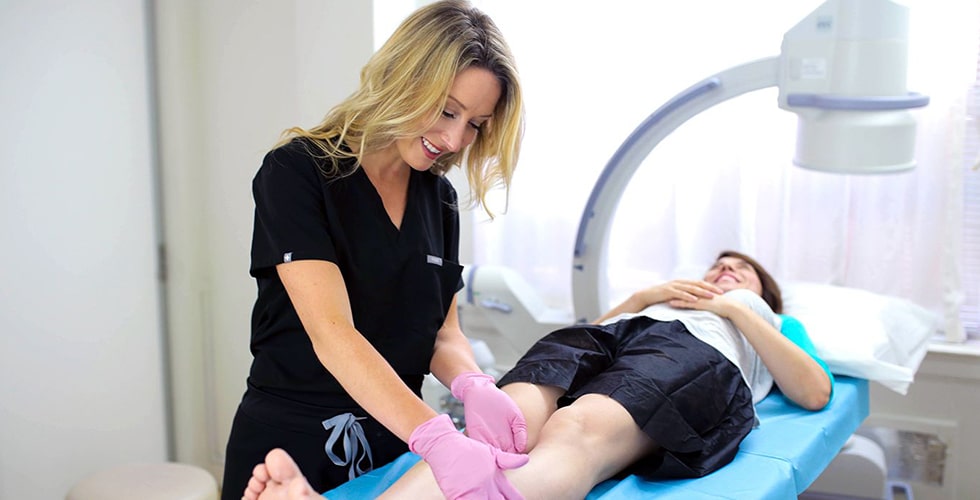
What Are the Common and Rare Complications of Sclerotherapy?
What can go wrong with sclerotherapy despite medical advances? Sclerotherapy is a low-risk procedure, and most patients have no complications. When they do, the complications are generally mild and resolve on their own. Here are possible side effects of sclerotherapy.
- Common Side Effects: Temporary redness or bruising at the injection site is common. This is similar to a mosquito bite (without the intense itch), and it resolves within a day.
- Mild Complications: Inflammation or allergic reaction is rare but possible. An allergic reaction to a sclerosant is typically localized, meaning it’s only irritating in the treated areas. These symptoms should resolve on their own. Ask your doctor before taking pain medicine for inflammation. Skin darkening or hyperpigmentation are also mild, uncommon complications, and they tend to resolve on their own.
- Rare Complications: In exceptionally rare cases, if the vein doctor doesn’t use Duplex Ultrasound, an undetected blood clot in the treated vein can break loose and travel to the lung. This can create a pulmonary embolism, if it blocks a vital artery. Go to the emergency room if you have difficulty breathing, chest pain, or a cough that produces blood. Choose an ultrasound-trained vein doctor to eliminate this risk. They’ll identify any blood clots before treatment and choose an alternate method if needed.
Should You Wear Compression Stockings or Do Sclerotherapy?
Some patients wear compression stockings to avoid vein treatments. Others wear them in conjunction with or after vein treatments. Compression stockings are non-invasive, and sclerotherapy is minimally invasive. So, theoretically, compression stockings are safer than vein treatments. But this isn’t true for many patients.
If you have blood clots, peripheral neuropathy, high blood pressure, heart disease, or are pregnant, compression stockings might not be advised. In addition, many patients with vein issues have correlated skin complications, like venous ulcerations, venous stasis dermatitis, and profuse bleeding. These issues don’t always work with compression stockings.
Plus, some patients develop vein damage where they can’t easily wear compression, like their nose, cheeks, or pelvis. It’s important to make the distinction that compression stockings can reduce symptoms of swelling or cramping in some patients, but they can’t treat damaged blood vessels. And compression can be either ineffective or dangerous if inadequate or excessive compression is applied.
If you want to wear compression stockings, ask a vein doctor first, and have them supply the correct size. For most patients, the safest, quickest way to resolve vein damage and vein disease is a minimally invasive treatment like sclerotherapy. If you don’t have your veins analyzed, you can’t determine whether you have blood clots or vein disease. So, see a vein doctor before attempting compression therapy.
Who Provides Safe Sclerotherapy Treatment for Varicose Veins?
Sclerotherapy has always been relatively low risk, and medical advances have made it even safer in 2023. But in order to receive safe treatment for varicose veins and spider veins, you need a vein center that’s up to date. Outdated procedures and medicines are still on the market, so choose an accredited vein center with ultrasound-trained vein doctors.
Our physicians can prevent unnecessary surgery and avoidable complications. They can also treat veins with more precision, so that one vein treatment will suffice. Visit our award-winning vein doctors at our vein centers in Scotch Plains, Woodland Park, Clifton, Paramus, or Woodbridge, New Jersey. We offer the full scope of cutting-edge sclerotherapy treatments.
